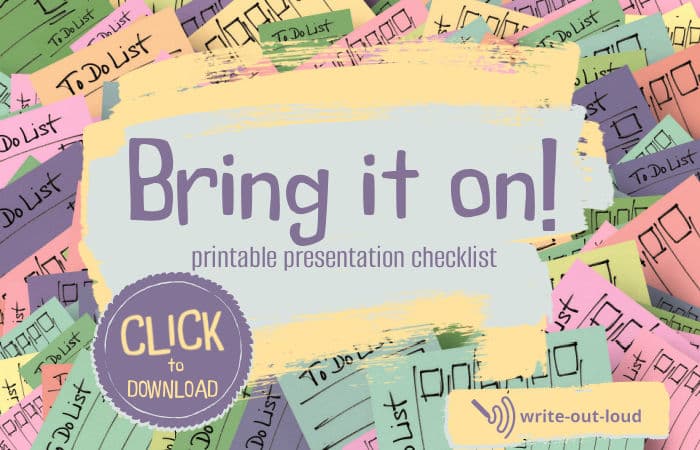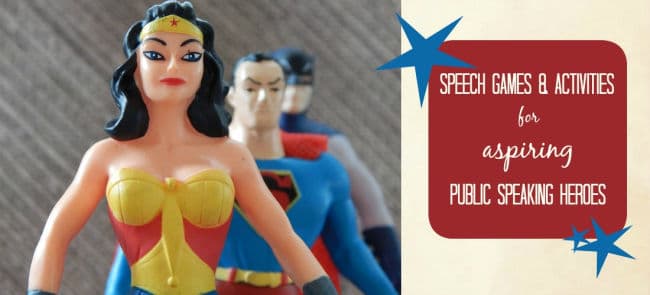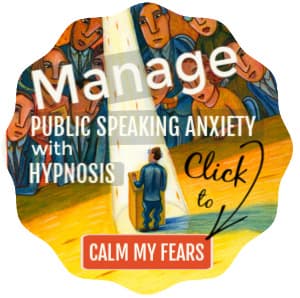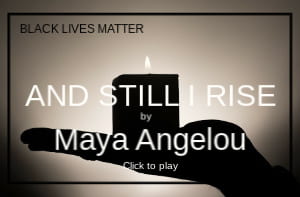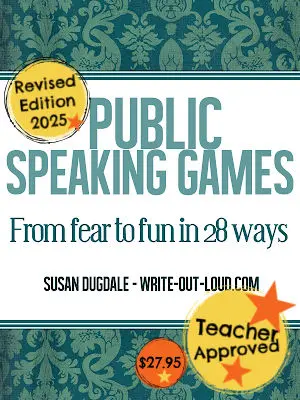- HOME ›
- 10 public speaking exercises
Public speaking practice exercises:
- the top 10 to tuck into your toolkit!
By: Susan Dugdale
Here's a collection of public speaking practice exercises covering the principal elements often requiring specific and sustained work. (Competency is an ongoing journey!)
The 10 aspects are:
- breathing,
- vocal warmups for: face, jaw, lips, and throat,
- using video to become conscious of any habitual unhelpful gestures we may make as we present,
- recording ourselves to hear our voices as others hear us,
- eye contact,
- sounding real (becoming congruent),
- speech rate,
- articulation,
- body language,
- and planning to succeed.
The exercises are simple, easily put into practice and will help you deliver your presentations more effectively.
Make them part of your regular preparation routine and you'll be delighted with the increased poise, confidence, and control you develop. ☺
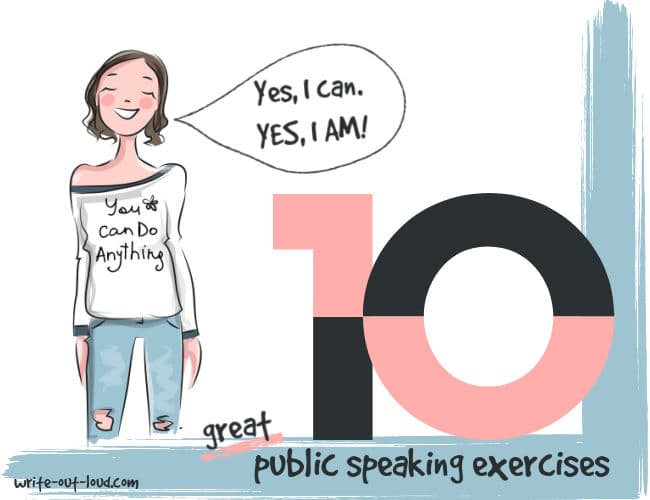
1. Breathe!
The first of these public speaking practice exercises focuses on breath because in order to speak well, we need to breathe well and that means fully using the lungs.
Being anxious or nervous is often expressed through shallow breathing which in turn affects the voice. It pushes the tone up, reducing its range and effectiveness.
Try this:
- Stand with your feet a comfortable shoulder width apart.
- Support the weight of your body through your hips and legs rather than locking your knees.
- Consciously release and relax your shoulders.
- If you're holding your stomach in, let it go.
- Place your hands on your stomach. When you are breathing well your hands will rise on an in-breath and fall on an out-breath.
- Breathe in through your nose to the count of 4. Count slowly: 1 - 2 - 3 - 4. As you inhale feel your diaphragm, and see your hands, rising.
- Breathe out through your mouth to the count of 4 and now feel your diaphragm expanding and see your hands lowering.
- Do several rounds of inhale and exhale to a 4 count while making sure you keep your shoulders, stomach and legs relaxed.
- Once you have mastered the 4 count, increase it. Through regular practice you will soon be able to extend it for a 8 or even 10 count.
Extra breathing exercises
Click the link to find more public speaking breathing exercises .
2. Hum, ha and yawn - vocal warmups
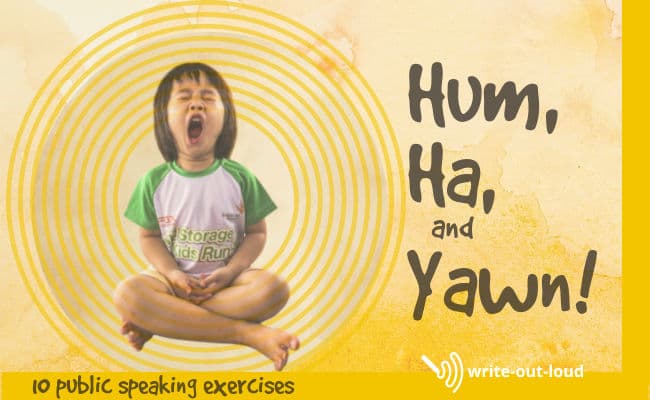
Humming, ha-a-a-ing and yawning will help you relax and tune-up your vocal equipment. A double win!
Hum a single note, simple tune or a scale gently, making sure your lips and cheeks are relaxed. You'll feel the vibrations resonating through your face and throat.
To 'ha' take in a full breath and on the release or out breath say 'ha-a-a-a-a-a-a' gently until you run out of air. Make sure your mouth is open and relaxed. Repeat several times.
Yawning releases tension in the jaw and if you're at all anxious, this is a place you'll feel it. Let that tension go by opening your mouth and yawning widely without strain. Add sound. 'Ahhh', 'eeeee' or 'oooooo' - until all the air in your lungs is gone. Repeat until your throat and jaw are relaxed.
3. Mirror, mirror on the wall*...
Many of us get anxious about what we look like to the audience when we're giving a speech. Others of us are not aware of habitual gestures we make.
Solve the problem by looking. Video yourself while presenting.
You'll see what you do and become aware of what you want to change. It can be quite an eye-opener!
*A while ago the advice was to practice in front of a full-length mirror. A video camera is the modern version.
4. Recording yourself speaking
What's the quality of your voice?
- Do you know what you sound like?
- What is your voice doing when you are speaking?
- How does it come across?
- Have you got any verbal mannerisms you are unaware of?
A recording will let you know. You'll hear those rising inflections at the ends of sentences, ums and ahs, and whether or not you're mumbling or racing your words.
Recording yourself allows you to hear yourself as others do and that's invaluable information. If you have a recorder, use it and if you have a video camera, better still. You can combine hearing and seeing yourself.
Understand the effect of your voice
For more about the impact of your voice on other people see voice image.
5. Eye contact in public speaking
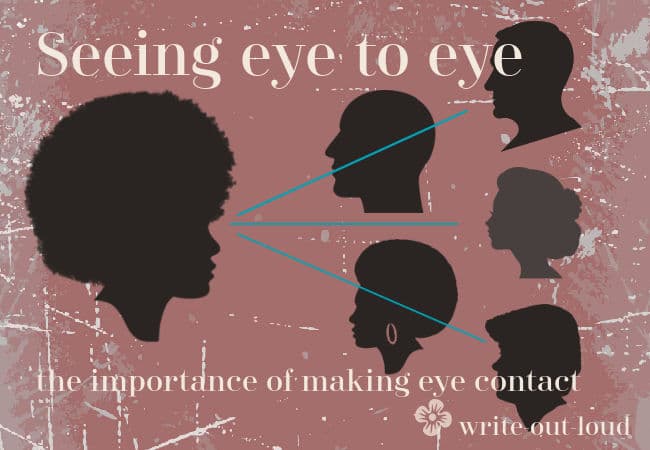
This exercise focuses on the question: who, exactly are you speaking to when you are delivering a speech?
It's customary, particularly in Western cultures, in an everyday conversation to make eye contact with the person we're speaking to.
It makes the conversation more meaningful for both parties. As the speaker, you feel you're being heard or listened to. As the listener, you feel you're being spoken to directly.
However ...
What happens when you give a speech to many people?
Making eye contact with members of your audience has the effect of making them feel as though you are talking to them personally. It's an acknowledgement, creating a bond for the duration of your speech, and beyond.
It works best when you spread your eye contact through the audience which means you'll meet the eyes briefly of a person in the front, then another on your right, someone on your left and then someone in the middle or back of the audience.
The contact is sufficient for them to feel spoken to directly and because you've directed your gaze left, right, and center that perception will be shared by the audience as a whole.
Practice meeting the eyes of one person for approximately 3-5 seconds, then another, and another, the next time you make a speech. You'll be amazed how much more connected to the audience you'll feel.
For more on the importance of eye contact, cultural differences, and exercises...
6. Sounding real or genuinely believable
If you're saying, "I'm really happy to be here today.", but sounding like, "I'm totally bored and can't wait to get off the stage.", your speech is going to create conflict for the audience because your words are saying one thing while your tone or expression is saying another. They are contradicting each other - not aligned, or congruent, and the people listening will be confused. Can they really trust or believe what you are saying?
Practice
To practice conveying the meaning you intend in your words try experimenting by saying your opening sentences as if you were:
- happy, then bored, then sad, try angry, now bitter, then teasing, and now, cynical.
The idea is to really listen to how you say the words, how you fill them with meaning. Ideally, there'll be noticeable differences between them.
The happy - sad difference
A happy person saying the same sentence as an unhappy one sounds different. The stresses or inflections they place on the words are different. They are spoken at a different rate and even, at a different pitch.
By playing with the way you deliver your words you'll develop more flexibility and with more flexibility you'll be more able to find the most appropriate way to express your words and have them interpreted in the way you intended.
Click the link to find more public speaking exercises for vocal variety.
7. Slowing speech rate
How fast do you speak?
A common response to feeling anxious about making a speech is to get faster and faster until the words are flying out of your mouth and become a blur in the ears of your listeners.
Curing fast through fear
The best public speaking exercise to cure 'fast through fear' is practice and a good way to do that is to consciously hear what you're saying by recording your speech.
Try saying at least a minute of it at varying speeds from very slow to very fast. Now listen to the result.
Which speed is more effective?
What conveys your message and gives your audience time to hear and understand it?
Too much speed, or too little, will alienate listeners. The truth is that you need a flexible speaking rate, fitting the content (what you're saying) and the needs of the audience. Some parts of your speech will be slower and others will be faster.
More help with finding the best speech rate
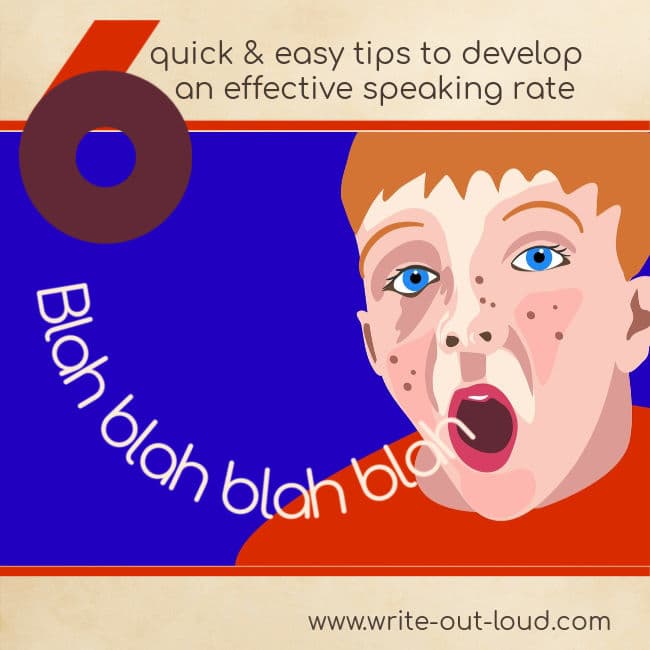
Click the link for more public speaking practice exercises to help you achieve a flexible speaking rate.
Do check this page too and give yourself the power of the pause. Understanding the power of silence and how to use to it effectively will also help you bring a fast speech rate down as well as helping you to emphasize your main points clearly.
8. How to speak clearly - articulation
If you are a mumble merchant you'll have people constantly asking you to repeat yourself because they don't understand what you're saying. Blurring your words or running them together blocks communication.
To stop it you need to enunciate or articulate clearly. That means using the tip of the tongue, the teeth and the lips to shape the sounds of a word cleanly. This public speaking exercise, old fashioned tongue twisters, is designed to do just that.
Start slowly and carefully making sure each word is pronounced crisply and then practice going faster and faster.
Here's a couple to begin with.
Red leather, yellow leather...
Red lorry, yellow lorry...
You know New York,
You need New York,
You know you need unique New York.
More articulation practice
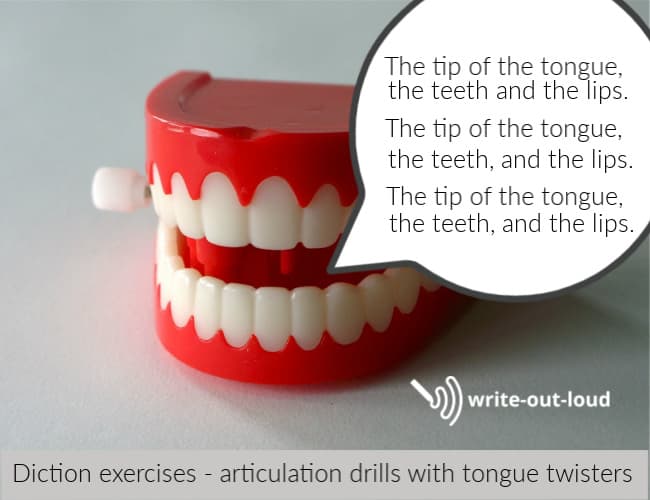
You'll find a whole lot more tongue twister drills on this page of diction exercises. Each focuses on different sound or letter combinations. Choose the ones you know you need to practice and have fun with them!
There's audio examples to listen to, too!
9. Body language in public speaking
In a speech, the words you say are only part of your total communication package. What makes up the rest of it is what you say non-verbally, with your body.
To be a more effective speaker the non-verbal communication, (what you do with your body while you are speaking), needs to actively complement your speech. In other words, they need to work together harmoniously!
To look confident, as well as sounding confident, practice standing tall, on both feet, in an 'at ease' position. Let your shoulders relax and breathe fully.
You can practice standing tall anywhere - in a supermarket queue, at home or at work.
Feel the difference it makes. Become aware of how empowering it is to have your head held high, to have your shoulders relaxed, to be standing on both feet.
Once you know how good and strong that feels as soon as you catch yourself slumping or hunching your shoulders, you can easily reverse it.
More about body language
Click the link to find out more about body language and how to use it in public speaking.
10. Bring it on! Planning ahead for success
A competent speaker plans ahead. They will have thought through as many possible angles of their presentation as they can. In doing so they will have identified the areas that could go wrong and will have taken steps to correct them BEFORE they can happen in reality.
So what could go side-ways in your presentation?
Are the props you are planning to use suitable?
- Can everyone see them easily?
- If you hand them around while you are talking will that disrupt and distract from your speech?
- Would it be better to wait until you've finished?
Are you giving a power point presentation?
- Have you checked for power sockets?
- Is the lead you're planning to use long enough?
- Do you need to bring a screen?
- Who is going to set the equipment up for you? No one? Have you practiced doing that for yourself?
Have you checked all the gear in the room you're going to use? The microphone? The lights? The whiteboards? (Have you got markers?)
Do you know the name of the person who is going to introduce you and where you going to meet them before your talk?
Go through your entire speech presentation looking at it from a 'what could go wrong' angle. For each possibility you discover, make a plan to meet it.
Thorough planning and preparation reduces the possibility of everything turning to chaos. Deciding to 'wing it' increases it.
Click the link to get yourself a printable 'bring-it-on' presentation checklist of items to consider and adapt it for your own use.
The time to begin practicing is now
Please don't wait until you have to give a speech to begin practicing any of these public speaking exercises you know you need. They'll deliver benefits in all areas of your life - more confidence, more conscious control over how you present yourself.
More fun public speaking activities
Click the link to find all the many public speaking games and activities on site. Use them in a classroom, for a public speaking group, or for yourself.
And lastly, if this content was useful to you please share and 'like' it. See right to do that. Thank you. ☺
